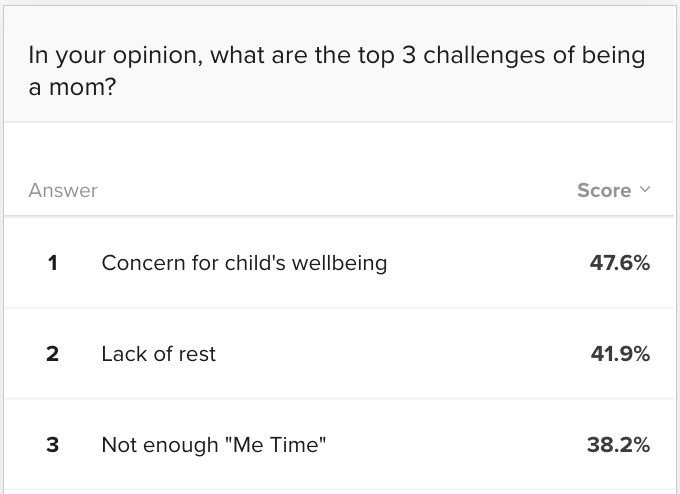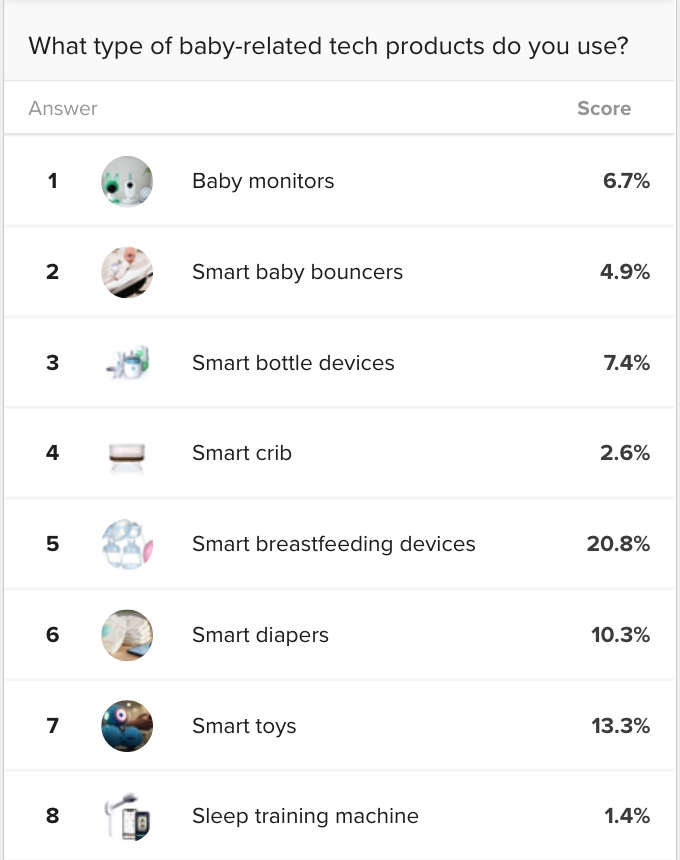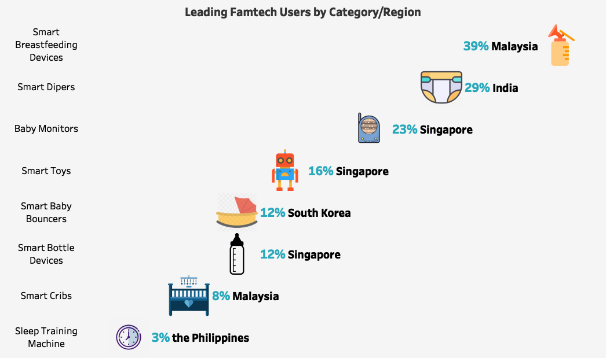This is the 2nd insights digest of Segmanta’s Moms in Asia 2020 study. We piloted the research in 9 Asian areas to find out what motherhood means to moms globally and how their lives are affected by it.
Parents turn to famtech to alleviate anxiety, to monitor their baby’s wellbeing, and to encourage baby growth and development. As Millennial and Gen Z parents are immersed in technology, they seek to improve motherhood with gadgets and devices. According to research, by 2025, the global baby product market size will reach an evaluation of $16.78 billion. With growing knowledge of baby safety, hygiene and nutrition, the baby product market in Asia has been expanding rapidly and countries like China and India are very likely to become the main driving force consuming baby products in the Asia Pacific.
Given rising awareness and demand for family technology products in emerging economies, we conducted a comprehensive survey in 9 Asian markets among mothers of children under 3 years old about their opinions of family technology, general motherhood experience and so on. Over 11,000 moms completed our survey.

The majority of Asian moms are still window shopping
According to our study, the biggest challenges Asian mothers encountered the most are concerns for children’s well-being (48%), lack of rest (42%), and not enough “me” time (38%). Despite the stress, 58% of the respondents are not yet using famtech to assist motherhood, leaving a huge untapped segment to marketers. To drive the window shoppers to the lower purchase funnel should be where the marketing effort goes. Products offered by famtech companies seek to address these challenges head-on. Our survey shows that 34% of the Asian moms follow famtech products on social media while 44% of the moms are already utilizing products like baby monitors, smart diapers, smart breastfeeding devices, smart cribs to make their lives less hectic. 52% of the millennial tech user moms purchased smart breastfeeding devices (1.5X more likely compared to overall, 21%); 35% of the Gen Z tech user moms bought smart diapers (2.1X more likely compared to average, 10%).

Asian moms can afford the tech stuff and they want more.
Tech products for babies/young children are becoming more sophisticated and better designed. For instance, smart baby bouncers can mimic a driving-car motion to help rock the baby to sleep faster. Meanwhile, the middle class in Asia is wealthy enough to afford famtech products. In the surveyed areas, we have the following discoveries:
- Asian moms who currently own at least one famtech product are the most likely (23%) to have a master’s degree. These moms also reported higher household income.
- The most commonly used famtech product category is smart breastfeeding devices (21%). These hi-tech breast pumps are discrete, portable, convenient, and sanitary. Additionally, smart breastfeeding device users are 56% more likely to be working full-time compared to average. In light of that, the tech products liberate moms to attend to other affairs in life without the burden of breastfeeding.

- The current tech product users are the most likely (33%) to find balancing career and family challenging.
- Some other tech products the mothers desire to have: smart nasal irrigator, educational/physical training (like play gyms) products and more.
Fun fact: More than half of the Japanese moms choose to go against the tech trend
Looking at the results on a regional level, 64% of Japanese moms said they refuse to purchase family tech products, which is 76% more likely compared to overall (36%). It seems surprising since Japan’s tech industry is one of its main economic pillars. Not just in Japan, a great number of moms in other Asian areas still want to raise their children in a natural, traditional way, with some distrust in technology here and there. Meanwhile, moms from other Asian countries (see below graph, illustrating which country/region are the most likely to follow which type of famtech product) are happy to surround their babies with tech products and free themselves to achieve more.

What do the moms mainly get out of using fam tech? Time, to recover from damaged sleep, to get a hold of career and life, to attend to personal needs, to obtain fast also thorough health data of their babies. Some mothers are skeptical, knowing there are many flaws in these gadgets. One mom mentioned:” It (tech product) will harm my children”. It’s true. Hacking threats, malfunctions/false readings, potentially toxic materials, and non-wallet-friendly pricings are the main reasons the parents shy away from trying out new tech products for their kids.
At CES 2020, various family tech brands and marketers showcased their innovative solutions, such as the smart diapers Lumi by Pampers. To expand the existing tech consumers, the fam tech companies/marketers should focus on extending their product exposure, converting window shoppers into customers by reducing the risks and inconvenience in childcare. Product safety, security, hygiene, durability, convenience are the main objectives of the current fam tech market. Additionally, as the baby grows up and starts using products for older children, the customer base “renews” itself frequently for newborns and younger infants that newly opt into fam tech products. Implementing personalized marketing strategies by utilizing declarative survey data can improve targeting effectiveness. Establishing a trustworthy brand image and emotional connection with the customers is also vital. As for audience strategy, establishing a high-value audience with fitting demo and geo profiles. In our other blog post, the mothers’ sensitivity to price and brands is another crucial factor for decision-making.
In conclusion, the Asian famtech market is relatively young and full of opportunities. Fundamentally, caring for mothers’ well-being is equally important as that of babies. Leveraging authentic, declarative customer data to amplify the marketing impact is effective and powerful.

